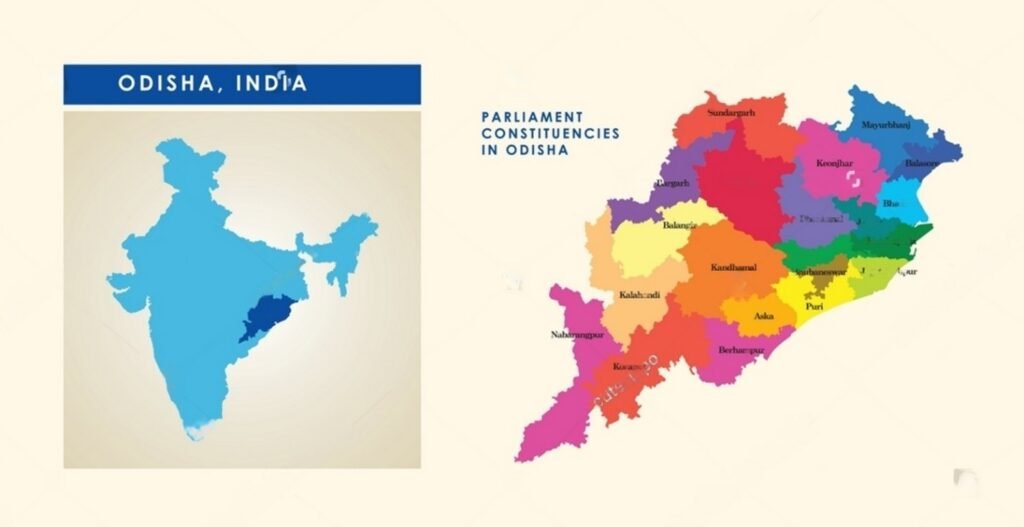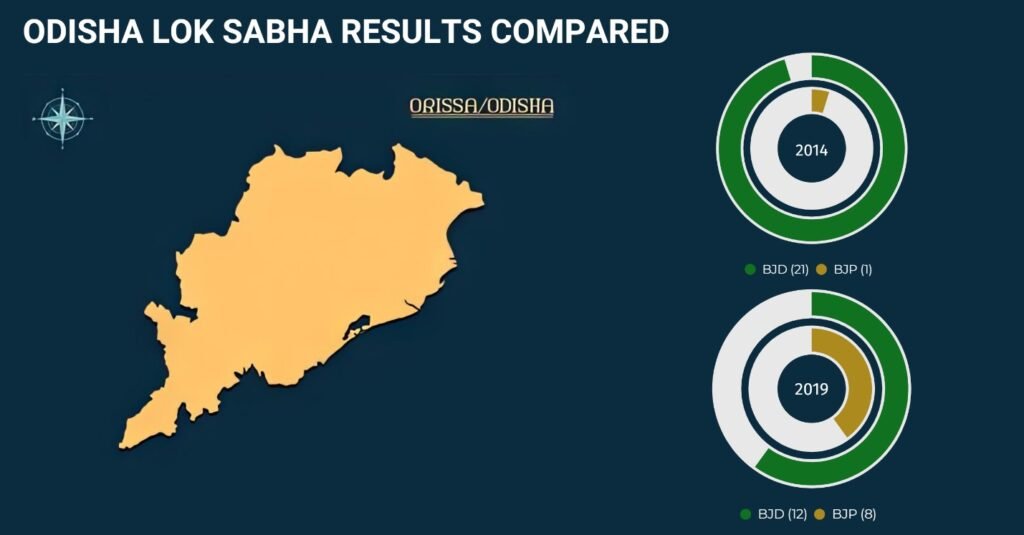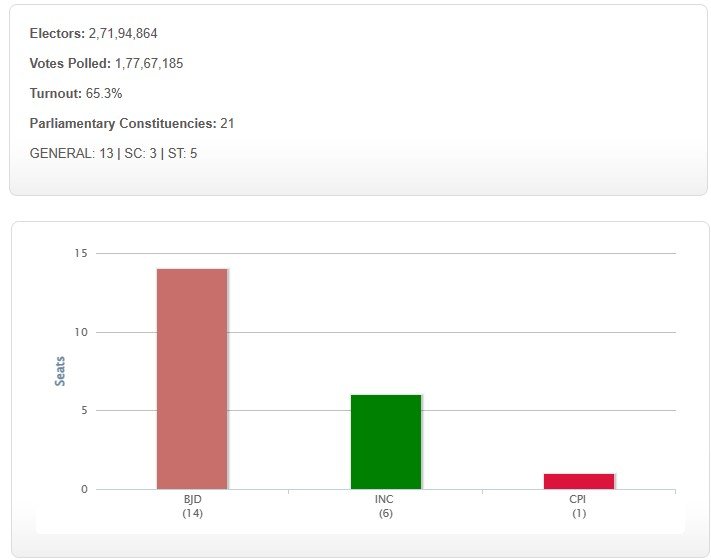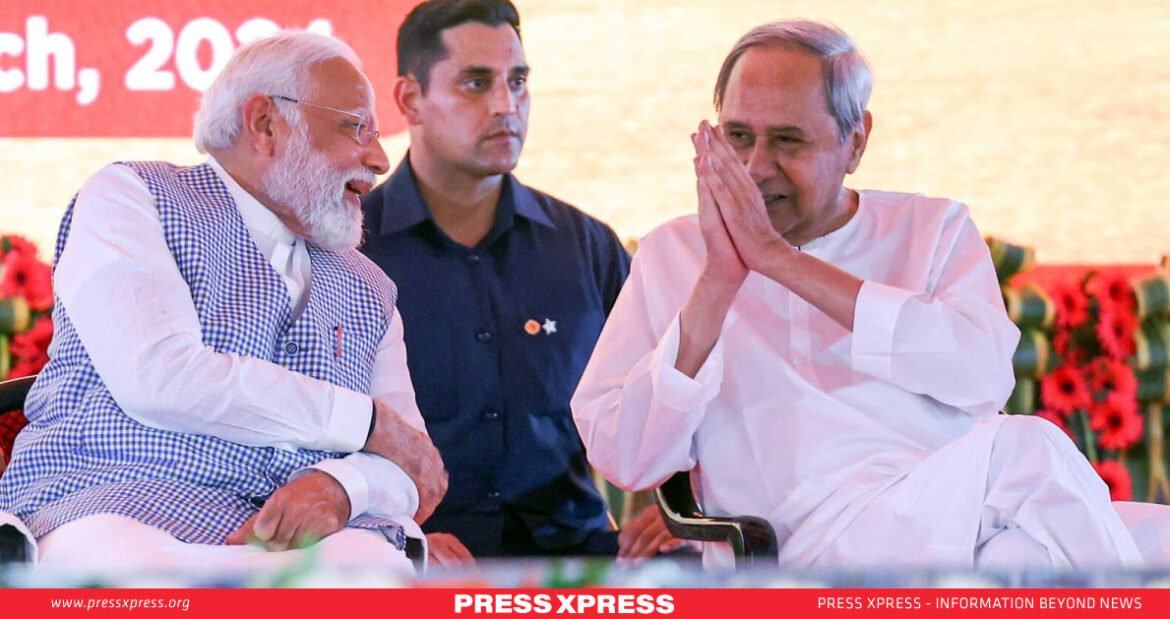Odisha, the eastern coastal state of India, has been witnessing some intriguing political developments in the past few weeks. The ruling Biju Janata Dal (BJD), led by Chief Minister Naveen Patnaik, has hinted at a possible alliance with the Bharatiya Janata Party (BJP), the dominant party in the National Democratic Alliance (NDA) at the centre. This has sparked intense speculation about the implications of the upcoming 2024 Lok Sabha Elections.
History of BJP and BJD
The BJD and the BJP have a history of being allies and rivals in Odisha State. The two parties formed a coalition government in the state in 2000, with Patnaik as the chief minister. They also fought the Lok Sabha elections together in 1998, 1999, and 2004, as part of the NDA. However, the alliance collapsed in 2009, following the communal riots in the Kandhamal district in 2008, which exposed the ideological differences between the two parties.

The Centre for Child Rights published a report that documented the extent of the damage caused by the Kandhamal district riots of 2008. The report revealed that the riots resulted in the destruction of at least 300 churches and the damage of 13 educational institutions and 5 NGO offices.
You Can Also Read: Five Issues to Watch As India Prepares For World’s Largest Election
Moreover, the report estimated that about 30,000 people had to seek shelter in relief camps for several months, and about 2,000 people faced coercion to convert to Hinduism. Another research conducted by the Kandhamal Committee for Peace and Justice corroborated these findings and added that 395 churches and places of worship and more than 6,500 homes were also looted and demolished during the August 2008 attacks.
Patnaik, who had declared himself a secular leader, severed ties with the BJP and accused it of being responsible for the widespread violence. The BJP, on the other hand, blamed Patnaik for failing to protect the minority community and appeasing the Maoists.

| Thirteenth Assembly | 15 May 2004 | 19 May 2009 | BJD – 61, INC – 38, BJP – 32, JMM – 4, OGP – 2, CPI – 1, CPM – 1, IND – 8 |
| Fourteenth Assembly | 19 May 2009 | 24 May 2014 | BJD – 103, INC – 27, BJP – 6, NCP – 4, CPI – 1, IND – 6 |
| Fifteenth Assembly | 25 May 2014 | 29 May 2019 | BJD – 117, INC – 16, BJP – 10, CPM – 1, SKD – 1, IND – 2 |
| Sixteenth Assembly | 30 May 2019 | Incumbent | BJD – 113, BJP – 23, INC – 9, CPM – 1, IND – 1 |
The Last four Odisha National Assembly results were Dominated by the BJD
Since then, the BJD has emerged as the dominant force in Odisha, winning four consecutive Odisha Legislative Assembly elections and three consecutive Lok Sabha elections.



The BJD has Maintained a Dominant Position in the Last Three Lok Sabha Elections (Source: https://www.indiavotes.com/)
The party has maintained a distance from both the NDA and the United Progressive Alliance (UPA). the two major national coalitions. By maintaining distance from both major national coalitions, the BJD has effectively asserted its independence and avoided being tied to any specific faction. BJD has instead adopted a policy of equidistance and issue-based support. Here are some key issues where the BJD has extended its support to the BJP-led National Democratic Alliance (NDA) government at the Centre:
- Delhi Services Bill: The BJD supported the Delhi Services Bill, which proposed to give the Union government control over transfers and postings of Delhi bureaucrats.
- Jammu and Kashmir Reorganization Bill, 2019: The BJD supported the government in the Rajya Sabha during the passage of this bill, which reorganized the state of Jammu and Kashmir into two union territories.
- UAPA Amendment Bill, 2019: The BJD’s support enabled the passage of amendments to the Unlawful Activities (Prevention) Act, expanding provisions related to terrorist acts and individuals/groups promoting terrorism.
- Right to Information (Amendment) Bill, 2019: The BJD backed amendments to the Right to Information Act, allowing changes in the term of Information Commissioners and salary reductions. The bill was passed in the Upper House with BJD’s support .
The BJP, meanwhile, has been trying to expand its base and influence in the state and has emerged as the main opposition party, replacing the Congress. The primary factors that contributed to BJP’s rise were a combination of Aggressive Campaigning; the Decline of Congress due to infighting and the expansion of the BJP’s social base. The BJP has also intensified its campaign and outreach in the state, with Prime Minister Narendra Modi and Home Minister Amit Shah making frequent visits and addressing rallies.
The recent hints of a possible alliance between the BJD and the BJP have come as a surprise to many observers and analysts. The BJD leaders have indicated that they are open to joining the NDA if it serves the interests of Odisha and its people. They have also praised the Modi government for its policies and initiatives.
Possible reasons and motivations behind the alliance
One of the possible reasons for the BJD’s change of stance is the changing political scenario (what’s it??) in the state and the nation. The BJD, which has been ruling the state for two decades, may be facing some signs of anti-incumbency and fatigue among the voters. Some signs that point to this are:
- The BJD government has faced accusations of poor governance, lack of development, unemployment, farmer distress, and corruption by opposition parties, particularly the BJP.
- Internal dissent and defections from senior BJD leaders to the BJP have raised concerns about the party’s leadership.
- The BJD has lost support among tribals, Dalits, OBCs, women, and youth, who are drawn to the BJP’s nationalist and pro-poor agenda and Prime Minister Narendra Modi’s charisma.
- Public resentment exists due to issues like low agricultural prices, water scarcity, and healthcare system inefficiencies.
The party may also be feeling the pressure from the BJP, which has been gaining ground and popularity in the state, especially among the urban and tribal voters.
The BJP, which won 8 out of 21 Lok Sabha seats and 23 out of 147 assembly seats in the 2019 elections, has set an ambitious target of winning more than 120 assembly seats and 20 Lok Sabha seats in the 2024 elections. The BJD may be looking for a way to counter the BJP’s challenge and secure its position in the state.
Another possible reason for the BJD’s overture is the uncertainty and instability in national politics. The UPA, which is the main opposition coalition at the centre, has been weakened and fragmented by the BJP’s dominance and the internal conflicts among its constituents. The Congress, which is the largest party in the UPA, has been facing a leadership crisis and a loss of credibility and support.
The BJD, which has been maintaining a neutral and independent stance, may be finding it difficult to navigate the complex and charged political landscape. The BJD may be seeking a stable and reliable partner at the centre, which can help it in getting more funds and resources for the state’s development and welfare.
Benefits and challenges For BJD and BJP:
BJD:
- A stronger bargaining power and influence at the centre
- resolving some of the pending issues and disputes, such as the Mahanadi water sharing and the special category status demand.
- A better image and perception among the voters.
- A reduced threat and competition from the BJP.
BJP:
- A boost to its prospects and performance in the 2024 Lok Sabha Elections.
- A consolidation of its position.
- A reinforcement of its ideological and policy agenda.
Risks and challenges for both the parties:
- A backlash and resentment from some of the core and loyal supporters and workers of both the parties.
- A loss of identity and autonomy for both the parties.
- A possibility of conflict and friction between the two parties, who may have different and divergent views and interests on some of the issues and matters, such as the NRC, the farm laws, the GST, and the coal block allocation.
The possible alliance between the BJD and the BJP may have significant implications for the 2024 Lok Sabha Elections, which are expected to be held in April and May 2024. The alliance may also influence the issues and agendas that will dominate the electoral discourse and debate and may shape the preferences and choices of the voters.
Some of the possible implications of the alliance are:
- The alliance may give an edge and advantage to the NDA, which may be able to increase its seat tally and vote share in Odisha, and may be able to retain its majority and mandate at the centre.
- The alliance may pose a challenge and disadvantage to the UPA, which may lose its relevance and influence in national politics, as it may not be able to offer a credible and viable alternative to the NDA.
- The alliance may create an opportunity and advantage for the I.N.D.I.A. alliance, which may emerge as the third force and the kingmaker in national politics, as it may be able to attract and mobilize the voters who are dissatisfied and disillusioned with both the NDA and the UPA.
The possible alliance between the BJD and the BJP is a fascinating and significant development in the political history of Odisha and India. The alliance may have far-reaching consequences and implications for the state and the nation, especially in the context of the 2024 Lok Sabha Elections.
The alliance may also reflect and reveal the changing and evolving preferences and choices of the voters, who may be looking for a stable and effective governance and development, and a balanced and harmonious coexistence of the regional and national interests and aspirations. The alliance may also challenge and test the abilities and capacities of the other parties and coalitions, who may have to rethink and reorient their strategies and tactics, and to adapt and respond to the new and emerging realities and scenarios. The 2024 Lok Sabha Elections may witness a multidimensional and multifaceted contest, where the possible alliance between the BJD and the BJP may play a crucial and decisive role. The alliance may also mark a new chapter and a new phase in the political history and evolution of Odisha and India.


